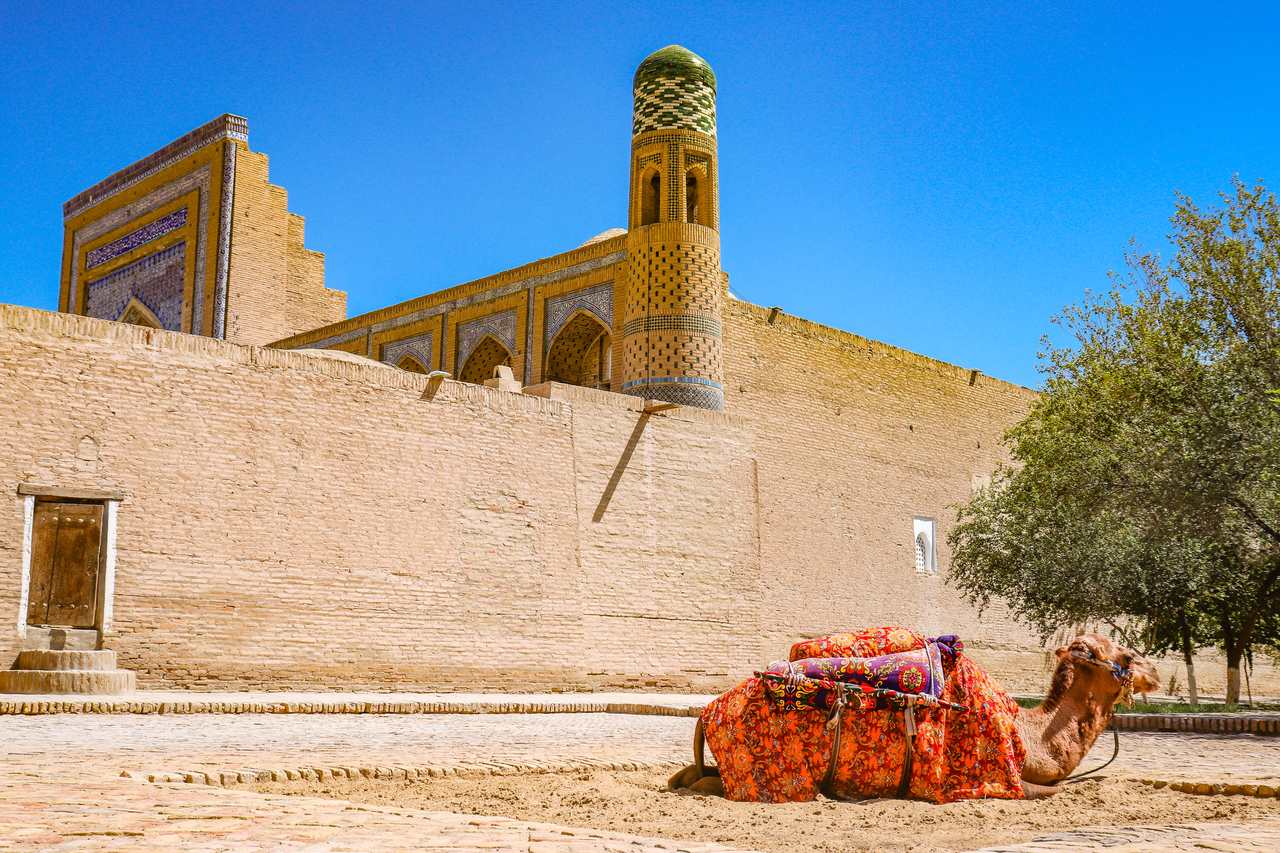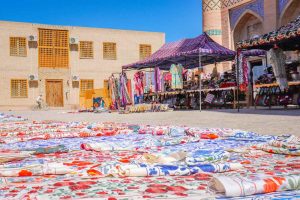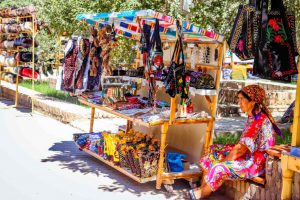At first glance, you might be forgiven for thinking Khiva’s old town, a walled pedestrian city, was built specifically for tourists. The glittering turquoise tilework, sand-coloured city walls, immaculate market stalls and towering minarets give the impression you have accidentally wandered into a living museum.
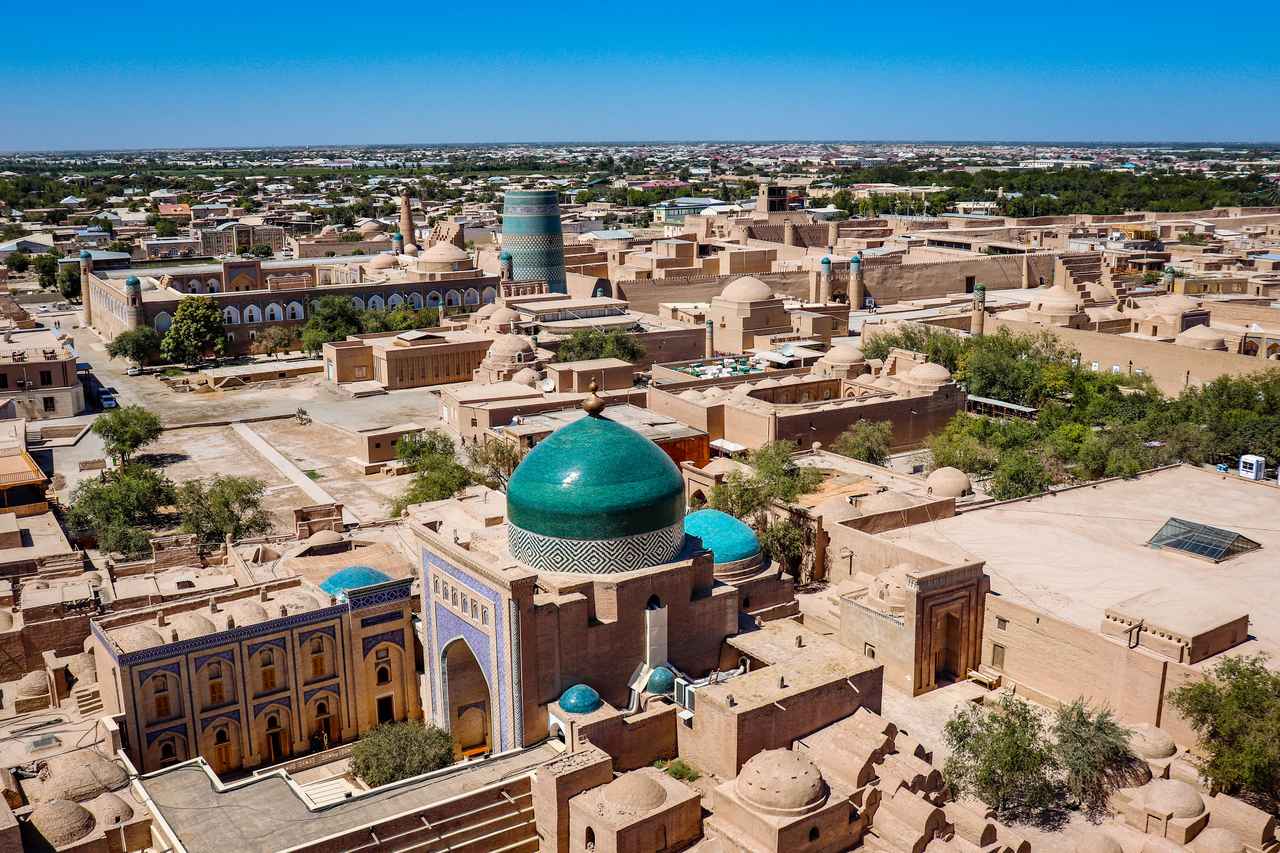
There’s more to the 6th century city of Khiva than you might imagine though. This striking Silk Road old town is actually full of history and culture and has been destroyed and rebuilt several times over hundreds of years. It is probably best known as being an important trading post that connected China and Rome during the Silk Road glory days.
Must stay at the Orient Star
The Orient Star hotel is one of the better hotels inside the old town and is located inside the historic Mukhamed Aminkhan madrassah, right by the main gate. It is definitely an experience in a traditional madrassah, even if the rooms are a tad sparse and windowless.
The good news is that the air conditioning, thankfully, is stellar. This is vital if you are visiting during the sweltering summer months. 8 rooms. The room facilities include your hotel basics including WiFi, mini-bar and telephone.
Due to its glorious architecture, there are normally throngs of tour groups and tourists hanging around outside the hotel, craning their necks to get snaps of its minaret, Kalta Minor.
Must visit the Old Town of Khiva (Xiva)
Khiva is divided into two distinct areas the Ichon-Qala area that is home to Khiva’s old town and the modern Dichon-Qala area, which is where most of the residents live.
Most tourists just visit the historic old town. Spend a day at this UNESCO World Heritage site and you will see busloads of tour groups wandering around this compact, tourist-friendly, walled city.
To visit the old town, you need to enter via one of the four entrance gates. The official entrance is the western gate where you can buy an entrance ticket that will allow you to visit the museums, historic buildings and minarets, for around 150,000 Som the local currency (approx $16/£13).
Must visit the Juma minaret
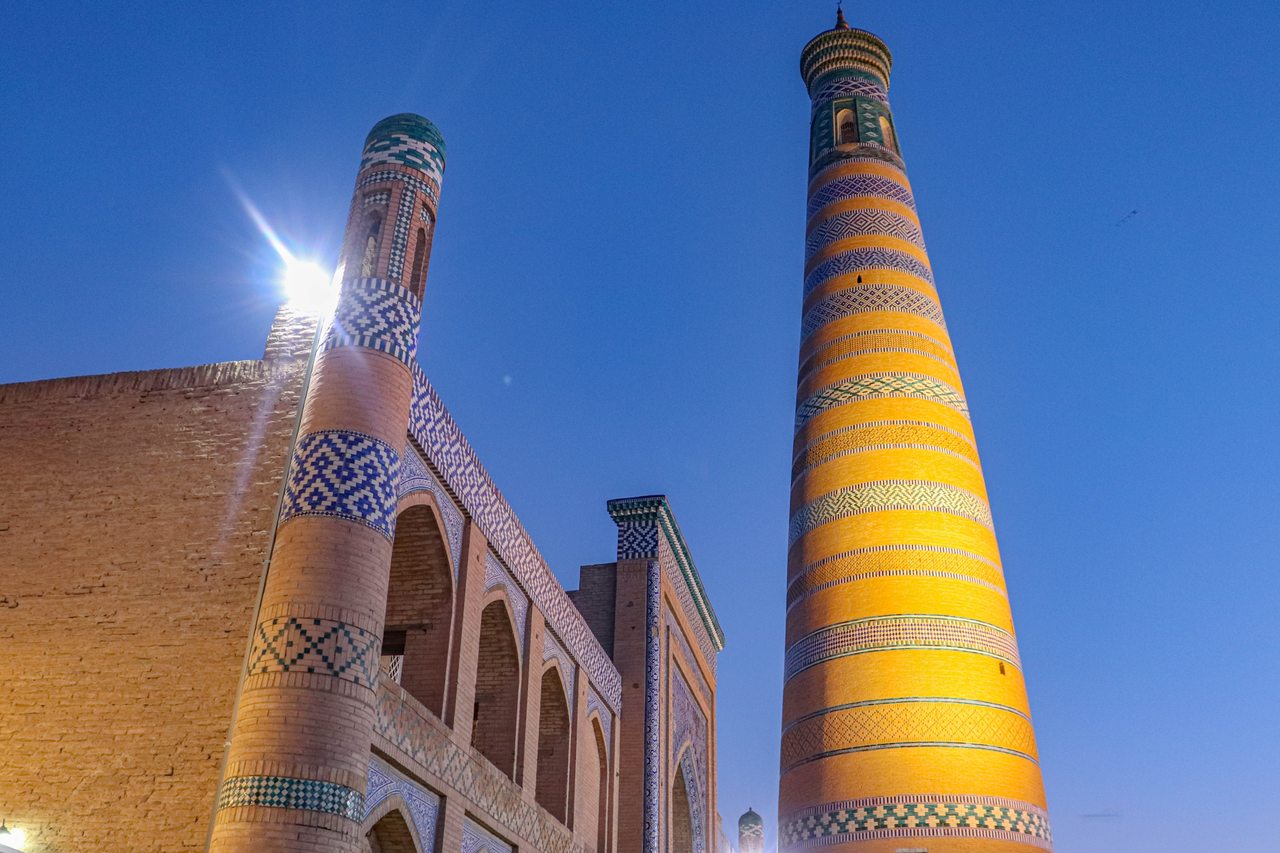
The best views of Khiva are from the top of the Juma minaret, the tower of its 10th-century mosque, one of the highest points in the city. The long ascent up a narrow staircase is not for the faint of heart, especially in the scorching hot summer temperatures.
For a cost of around $2 (£1.62), you can climb the 81 steps and to the top of the 47-metre minaret. If you manage to will yourself up the claustrophobic and dark spiral staircase, you will be rewarded with a spectacular panorama of the old town.
Must have tea at Teahouse Farrukh
For steaming cups of traditional Uzbek tea, head to the Teahouse Farrukh. Enjoy tea in typical Uzbek style, popped up by colourful cushions on a sort of table-bed covered with bold fabrics. The shaded surrounding provides some much-needed respite from the sizzling temperatures outside.
TIP: it is frankly impossible to enter and exit a table bed with any sort of dignity, think awkward bum shuffles.
For the coffee fans, there is also a selection of lattes, black coffee and cappuccinos available, if you wish to deviate from traditional tea.
If you are feeling peckish, lunch options include soup, stuffed peppers, lagman and plov, the usual Uzbek offerings.
It’s slightly more expensive than some of the other tea houses but does redeem itself with free WiFi and charming surroundings.
Khiva continues its long tradition of trading with beautifully presented market stalls dotted around the old town. The neat stalls and inviting traders make Shopping in Khiva a real pleasure.
The stalls are overflowing with bright fabrics, ceramics, figurines, traditional clothing and even fur hats, which does cause a wry smile when you consider the 98°F conditions.
There are also covered shopping areas including the Eastern gate passageway. This passageway is also of historical significance as it was traditionally where slaves were sold in Khiva.
Must admire the exquisite tiles of Khuna Arc
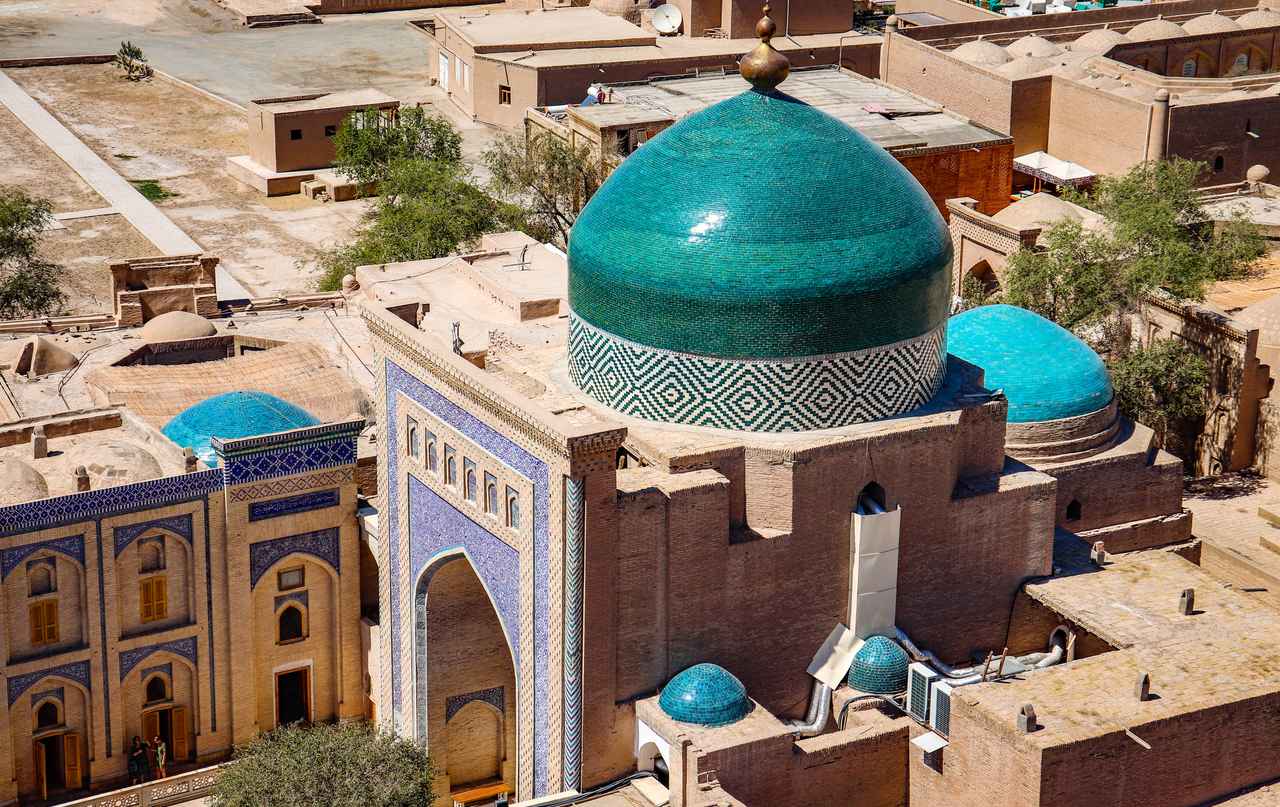
The Khuna Arc is an impressive fortress and former residence of Khivan rulers dating back to the 12th century. It was expanded in the 17th century to include the khans’ harem, a mint, stables, mosque and even a jail.
The real draw here is the phenomenal, ornamental tile work that is a lasting relic of Silk Road riches and glory. This is also definitely a picturesque spot to get those quintessential Silk road snaps.
There is also a free evening tourist performance that features traditional music, dance and costumes.
Whilst it is impossible to follow the narrative due to the language barrier it is wacky enough to keep you interested enough for the 20 or so minutes it lasts.
Must end the evening at Restaurant Zarafshan
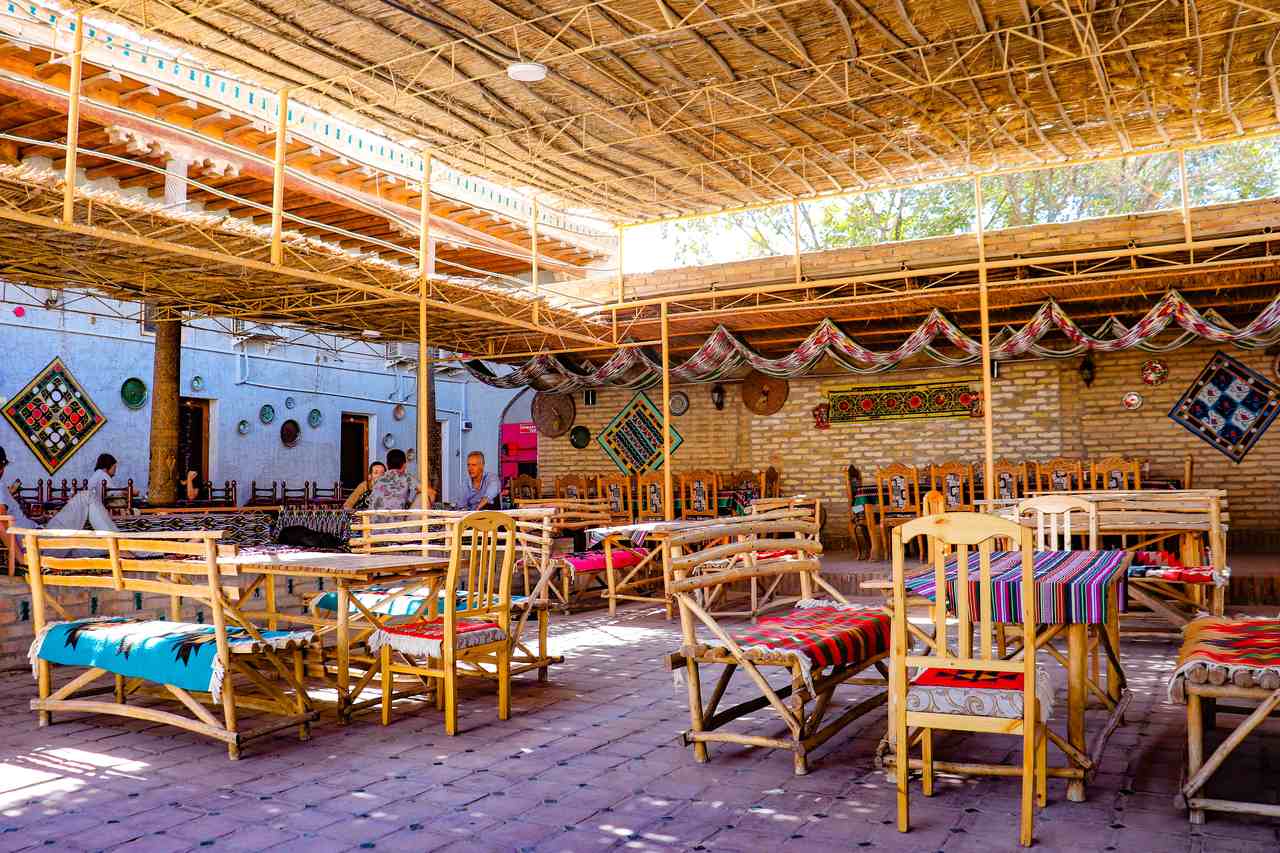
Eating in Uzbekistan is probably best regarded as a necessity rather than one of life’s great pleasures. However, Restaurant Zarafshan gives standard Uzbek cuisine a fair shake and offers a pleasant dining experience to old town visitors.
The restaurant is located in Tolib Makhsum Madrasah and offers great views of the Islam Khodja architectural complex.
Make sure to dine in the outside seating area to watch dusk set in and the surrounding buildings light up in a rather dazzling display. Musicians also play a soothing repertoire of traditional songs into the evening.
Choose from a range of local specialities including pumpkin soup, pilaff (a rice and meat stew), manty, green dill pasta, dimlama and fish.
Also Read: Discovering Uzbekistan
Also Read: 24 hours in Tashkent, Uzbekistan

